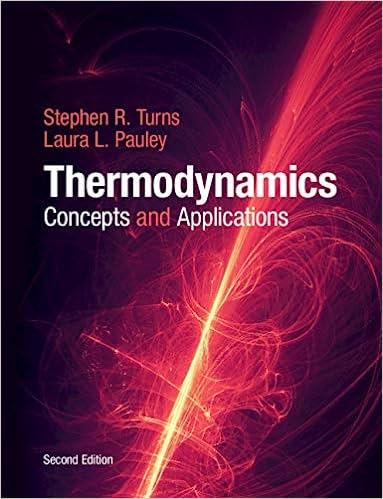Consider a power cycle in which air is the working fluid. The air is contained in a
Question:
Consider a power cycle in which air is the working fluid. The air is contained in a piston–cylinder assembly and undergoes the following processes:
State 1–State 2: Isentropic compression from the maximum volume Vmax to the minimum volume Vmin, where Vmax = 10Vmin. The initial state pressure, temperature, and volume are 100 kPa, 300 K, and 0.001 m3, respectively.
This process can be described as PVγ = constant, where γ is the specific-heat ratio.
State 2–State 3: Constant-volume heat addition until the temperature T3 reaches 1000 K.
State 3–State 4: Constant-pressure heat addition until the volume equals 3Vmin.
State 4–State 5: Isentropic expansion from V4 (= 3Vmin) to the maximum volume Vmax. See the note for process 1–2.
State 5–State 1: Constant-volume heat rejection to return to the initial state.
A. Carefully sketch the cycle in pressure–volume coordinates. Label the state points 1, 2, 3, etc.
B. Assume the specific heats can be treated as constants with the following values: cp = 1.008 kJ/kg · K, and cv = 0.721 kJ/kg · K. Determine the work transfer associated with each process and the net work for the cycle.
Step by Step Answer:

Thermodynamics Concepts And Applications
ISBN: 9781107179714
2nd Edition
Authors: Stephen R. Turns, Laura L. Pauley





